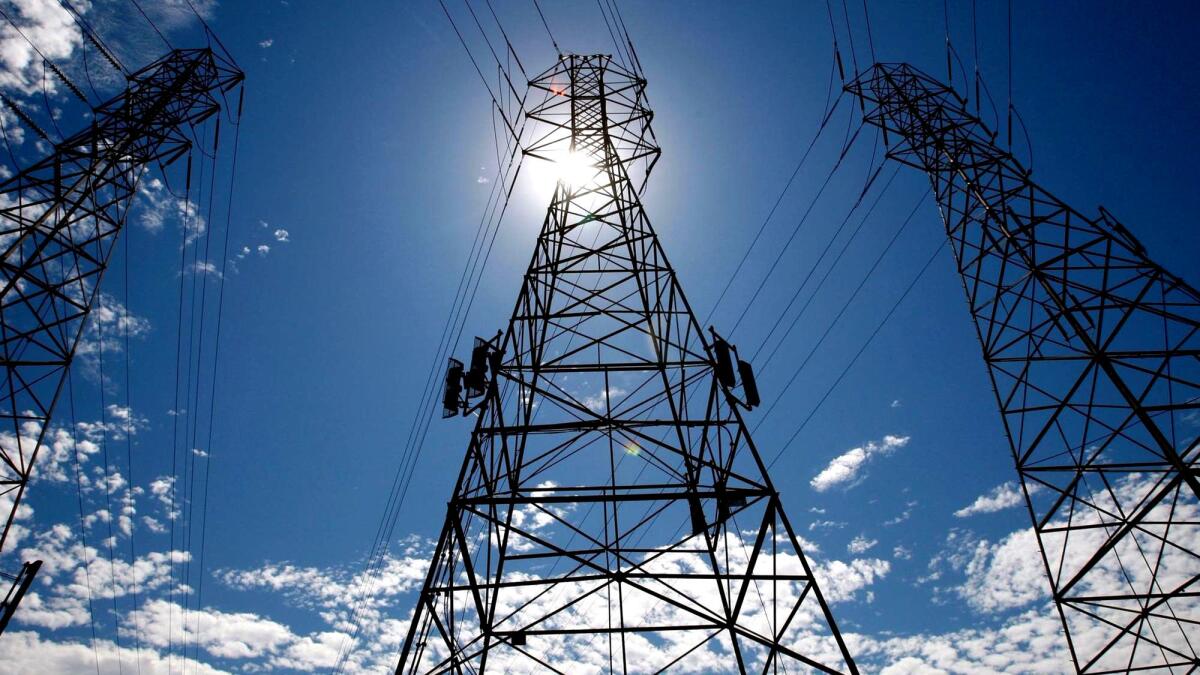California regulators boost fees charged when customers leave traditional utilities

The California Public Utilities Commission has approved an increase in exit fees charged to customers who buy electricity from government-run community choice programs rather than traditional utilities such as Southern California Edison and San Diego Gas & Electric.
After reviewing two competing exit fee proposals, all five commissioners voted Thursday in favor of an adjustment that many advocates predicted could hamper the growth of the community choice movement, which has begun to gain traction with 19 community choice aggregators operating in California.
In Los Angeles and Ventura counties, the Clean Power Alliance CCA hopes to sign up nearly 1 million customers by the end of next year. The city of San Diego is weighing two options — one from SDG&E and the other from CCA proponents — as it moves toward a goal of 100% clean power by 2035.
“I support the creation of alternative electric providers to expand customer choice, and our legal obligation is to make sure this happens without increased costs to customers who do not, or cannot, join a CCA,” said Commissioner Carla Peterman, who authored the proposal that passed. “Today’s proposal ensures a more level playing field between customers.”
Under the CCA model, utilities still handle customer billing and maintain transmission and distribution lines. But officials in a given local government entity make the final decisions about what kind of power sources are purchased.
Once a CCA is formed, its business and residential customers must pay an exit fee — called a power charge indifference adjustment — to the legacy utility serving that particular region. The fee is included in customers’ monthly bills.
The fee is required to offset the costs of the investments utilities made over the years for things like long-term power contracts, natural gas power plants, renewable energy facilities and other infrastructure.
Utilities argue that if the exit fee is set too low, it does not fairly compensate them for their investments and gives CCAs too much of a price advantage; if it’s too high, CCAs say, it reduces the financial incentive for their potential customers.
The Public Utilities Commission chose to adopt a proposal that some said was more favorable to utilities, leading to complaints from CCA boosters.
“We see this will really throw sand in the gears in our ability to do things that can move us toward [climate change] goals,” Jim Parks, staff member of Valley Clean Energy, a CCA based in Davis, said before the vote.
The commission estimated that because of the fee adjustment, CCA residential customer bills would increase 2.5% in Edison territory, 5.24% in SDG&E territory and 1.68% in Pacific Gas & Electric Co. territory.
But minutes after the vote was announced, one of the leading voices in favor of the city of San Diego establishing its own CCA said the decision was good news because it provides some regulatory certainty.
“For us in San Diego, it’s a green light to move forward with community choice,” said Nicole Capretz, executive director of the Climate Action Campaign. “For us, it’s let’s go, let’s launch and let’s give families a choice. We no longer have to wait.”
The Clear the Air Coalition, a San Diego County group critical of CCAs, said the new exit fee — which goes into effect next year — is “a step in the direction.”
But the group, which includes the San Diego Regional Chamber of Commerce, the San Diego County Taxpayers Assn. and lobbyists for Sempra Energy, the parent company of SDG&E, repeated concerns it has brought up before.
“If the city of San Diego decides to get into the energy business, this decision means ratepayers in National City, Chula Vista, Carlsbad, Imperial Beach, La Mesa, El Cajon and all other neighboring communities would see higher energy bills, and San Diego taxpayers would be faced with mounting debt,” coalition spokesman Tony Manolatos said in an email.
CCA supporters say community choice is crucial to increasing the use of renewable energy while reducing customer bills.
A feasibility study released last year predicted a CCA in San Diego has the potential to deliver cheaper rates over time than SDG&E’s current service, while providing as much as 50% renewable energy by 2023 and 80% by 2027.
“The city has already figured out we are still capable of launching a program, having competitive, affordable rates and finally offering families a choice as to who their energy provider is,” said Capretz, who helped draft an initial blueprint of San Diego’s climate plan as a city staffer.
SDG&E has come to the city with a counterproposal that offers 100% renewables by 2035.
Thus far, the utility has produced a rough outline for a “tariff” program that would charge ratepayers the cost of delivering more clean sources of energy over time.
Speaking in general about the utility commission’s decision, SDG&E spokeswoman Helen Gao called it “a victory for our customers, as it minimizes the cost shifts that they have been burdened with under the existing fee formula.”
“As commissioners noted in rendering their decision, reforming the [exit fee] addresses a customer-to-customer equity issue and has nothing to do with increasing profits for investor-owned utilities,” Gao said in an email.
More to Read
Inside the business of entertainment
The Wide Shot brings you news, analysis and insights on everything from streaming wars to production — and what it all means for the future.
You may occasionally receive promotional content from the Los Angeles Times.











